Acaulospora dilatata
Preparing Clean Healthy Spores for Shipment
Extracted Population of Spores
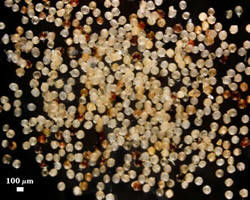
Acaulospora dilatata typifies small pale-spored Acaulospora spp. Parasitism of spores can occur, but it is more infrequent than in the larger darkly pigmented species. More often “deviant” spores are degraded or dead, as typified below by unusual appearance of spore contents.
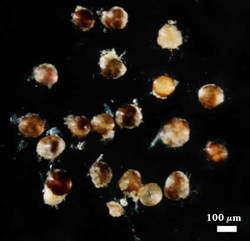
Parasitized or Dead Spores
Spores with black, red, or brown contents usually are parasitized. Fungi are the most common culprits and so hyphae often will be seen emanating from such spores.
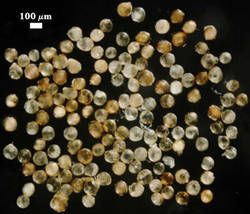
Spores with Irregular Contents
Lipid globules tend to be evenly distributed in healthy spores (see healthy spores below). Those with some discoloration accompanied by irregular lipid distribution suggest degradation or senescence. These spore often are not parasitized, but we cannot be sure from visual examination alone. Therefore, they also are culled from the population.
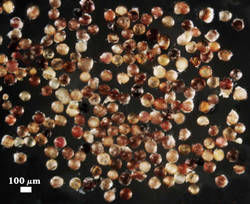
Abnormally Discolored Spores
Many of the small-spored Acaulospora species have little color variation when healthy. Spores which are much darker often are accompanied by irregular, coalesced, or damaged contents. These spores rarely are infective, indicating they are dead.
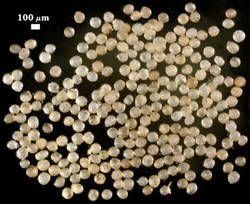
Healthy spores that have shown little change over at least 24 hr are considered ready for shipment in sterile sand. In the photo at left you can see uniformity in spore color and contents. When there is little change in these phenotypes over a 24-48 hr period of incubation in a refrigerator, then we consider the population clean and healthy.